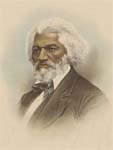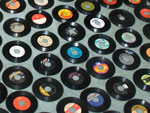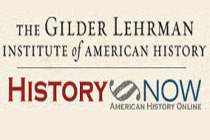In February, Teachinghistory.org rounded up sesquicentennial resources state by state. Now, with April and the anniversary of the April 12 bombardment of Fort Sumter upon us, let's look at some materials that aren't state-specific.
Blogosphere
Peruse the blogosphere for updates on new materials and tips on finding the best of preexisting websites and archives. Education Week's blog "Curriculum Matters" posted two entries looking at websites, curriculum, and blogs focusing on the sesquicentennial in March: one entry on the 21st and one on the 24th. Watch for more to come.
Peruse the blogosphere for updates on new materials and tips on finding the best of preexisting websites and archives.
The American Historical Association blogged on teaching the sesquicentennial, and History News Network gave the anniversary a turn as a hot topic. Plenty of individuals have set up blogs of their own to track sesquicentennial developments—look around, and see if anyone's taking a tack that interests you. Remember to assess the credentials and viewpoints of any blog you follow—who's writing it, and what is their goal in writing?
Here are two blogs whose "authors" you might recognize: the New York Times' "Disunion" and the Washington Post's "A House Divided". Both blogs feature entries by historians, published authors, and others (remember to assess the credibility of these writers for yourself, just as you would with an individual blogger!) on Civil War topics.
"Disunion"'s short-essay-style articles often include links to primary sources, while "A House Divided" answers questions on the Civil War. (Browse the Post's "Civil War 150" feature for more videos, articles, and event updates related to the sesquicentennial.)
Lesson Plans
If you're looking for lesson plans, the Civil War Trust recently released a new free curriculum set , including nine lessons and an exam for each level (elementary, middle, and high). The Trust's website also includes primary sources, maps of battlefields, a directory of Civil War sites, and more than 50 other lesson plans.
Try the Smithsonian National Museum of American History's History Explorer for more than 80 lesson plans.
EDSITEment has an abundance of lesson plans—more than 40 related to the war. Also try the Smithsonian National Museum of American History's History Explorer for more than 80 lesson plans.
The American Red Cross, working with teachers, academics, and legal scholars, has developed a series of lesson plans entitled The American Civil War: A Humanitarian Perspective. Through activities that use primary sources, students learn about the roots of the American Red Cross through Clara Barton's work, battlefield conduct laws created by President Lincoln that predate the first Geneva Convention, and basic principles of humanitarian law.
Primary Sources
Looking for some orientation to all of those sources? Sign up for one of the Smithsonian's April webinars designed to show teachers around Smithsonian Civil War resources. Or explore the Library of Congress's guide to 21 sources related to Southern secession.
How about primary sources such as letters from Lincoln, Grant, Lee, and other Civil War era figures?
The National Archives and Records Administration (NARA) invites you to examine the Civil War through "little-known stories, seldom-seen documents, and unusual perspectives" in their new exhibit "Discovering the Civil War", including lesson plans and other teaching resources.
The Library of Virginia's online exhibit "Union or Succession" also focuses on primary sources from the debate over secession. Check out the Library's "CW 150 Legacy Project," too—are any organizations in your area working on collecting sources?
How about primary sources such as letters from Lincoln, Grant, Lee, and other Civil War era figures? Today in the Civil War: Dispatches from the Rosenbach Collection reproduces Civil War-era documents from the Rosenbach Collection 150 years after their creation. Each day a new item is posted, accompanied by a full or partial transcript.
Keep Looking!
This barely scratches the surface of the Civil War materials available to you. Maybe you'd rather listen to your Civil War history—Gilder Lehrman offers more than 20 podcasts on the Civil War era. Longwood University also has you covered, with its "That a Nation Might Live" podcasts following the war week by week.
Would you rather follow (present-day) events as they unfold? Track commemorations nationwide with the National Park System's Civil War website.
Take a look around the Internet, see what else you can uncover, and share your finds in comments here! The sesquicentennial starts this month, but it will last for years. New resources will appear, and established ones will expand, so keep your eyes open!





 I am heartened when I communicate with prospective history educators who believe in the idea of teaching history beyond the textbook. These future teachers share innovative ideas of image and document analysis in an effort to move students toward developing historical habits of mind and keen interest in the world around them. It is my contention that teachers can and should consider the use of music in the same way they consider more archetypal sources—as essential to effective teaching.
I am heartened when I communicate with prospective history educators who believe in the idea of teaching history beyond the textbook. These future teachers share innovative ideas of image and document analysis in an effort to move students toward developing historical habits of mind and keen interest in the world around them. It is my contention that teachers can and should consider the use of music in the same way they consider more archetypal sources—as essential to effective teaching. 
